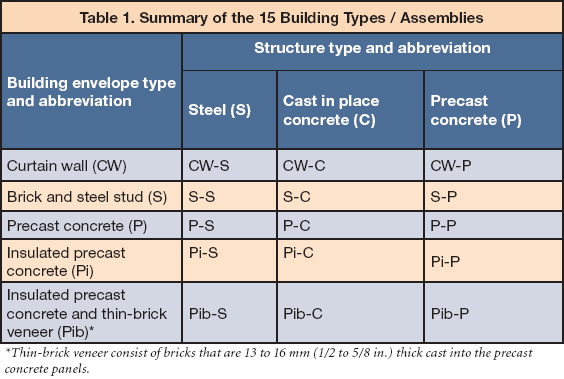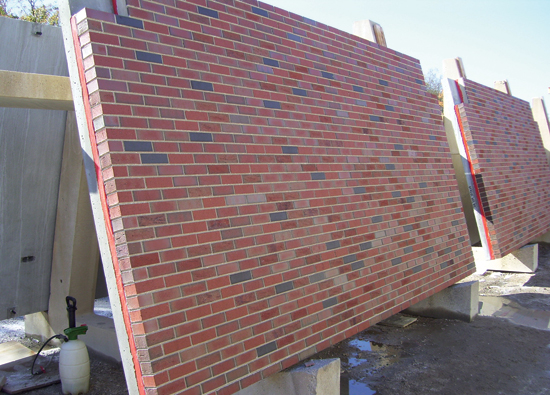Precast Concrete Life-Cycle Assessment and High-Performance Design
The meaning of high performance thus became to design and build structures that optimize all relevant attributes on a life-cycle basis rather than a solely first-cost basis. With this criteria, high performance essentially became synonymous with life-cycle design—design for the long term. Critical to achieving this designation were high-performance materials and systems—integrated systems that allow for design versatility and are efficient, resilient, and can be optimized to meet the multi-hazard requirements and long-term demands of high-performance structures.
High-performance criteria have not only become important to building owners, but essential in meeting the standards of funding agencies and green codes, notably the new International Green Construction Code, LEED (v.4), ASHRAE 189.1, and the mandate by the U.S. Federal Government Executive Order 13514, which requires government buildings to achieve net-zero energy use by 2030.
Life-Cycle Assessment: A Scientific Approach to Sustainability
Life-cycle assessment is widely accepted as an objective and scientifically based determination of a product's environmental impact, based on examining a broad range of environmental impacts over its life cycle. All phases of a product's life, from cradle to grave, have an impact on the environment. These impacts can be quantified and compared through an LCA, which assesses those impacts from the time materials are extracted through manufacture, storage, use, recovery, reuse, and disposal, including all transportation required during a product's existence. All inputs and outputs (materials and energy used, and emissions to air, land, and water) of a specific material are assessed with respect to their impact on the environment. This information is used to improve processes, support policy, and provide a sound basis for informed design decisions.
There are several variations in the scope of an LCA. One of the most commonly used versions of the LCA is cradle-to-gate, which is an assessment of a partial product life cycle from resource extraction, or cradle, to the factory gate, or before it is transported to the consumer. The use phase and disposal phase of the product are omitted in this case. Often, cradle-to-gate assessments are the basis for environmental product declarations (EPDs), defined as “quantified environmental data for a product with pre-set categories of parameters based on the ISO 14040 series of standards, but not excluding additional environmental information.” EPDs have often been likened to a nutrition label for a product, but providing environmental instead of health information. Third-party verified reports published by manufacturers regarding the environmental performance of their products, EPDs can now contribute to a project's earning of LEED credits. While many architectural firms already require transparency from their product vendors, LEED v4 will accelerate this trend by awarding points for projects that use a certain number of products with EPDs.
Although cradle-to-gate EPDs are an incomplete sustainability assessment, in many cases they are the best assessment that product manufacturers can provide at this time. However, for many building materials and products, the overwhelming majority of adverse environmental impacts occurs during the use phase, but the use of a product isn't always known at the time it leaves the manufacturing facility. Thus, the use phase can be difficult to include in an EPD without making several assumptions about how the product may be used. Encouraging product manufacturers to provide EPDs can still provide some value, however, because oftentimes the product manufacturers identify environmental hotspots in their processes just from going through the exercise of performing an LCA and creating an EPD.
To get a true sustainability picture, some experts maintain that only the LCA of a building over its full life cycle can provide estimates of the full range of environmental burdens, such as embodied energy use and related fossil fuel depletion; other resource use; greenhouse gas emissions; and toxic releases to air, water, and land. This is important to better understand the overall net effect of our design decisions on the environment. When applied to buildings, an LCA includes the following phases: resource extraction; manufacturing and transportation of materials and prefabricated components; on-site construction; building operations, including energy consumption and maintenance; and end-of-life reuse, recycling, or disposal.
Life-Cycle Assessment of Precast Concrete
The Precast/Prestressed Concrete Institute (PCI) initiated a life-cycle assessment with Morrison Hershfield and the Athena Institute to investigate the environmental impact of precast concrete. In 2013 a “cradle-to-grave” LCA study relating to commercial buildings was completed. In broadest terms, a cradle-to-grave LCA evaluates the environmental performance of a building over its entire life cycle, which the study divides into manufacturing, construction, maintenance, operating energy, and end-of-life stages. This was a comparative study, examining the performance of precast concrete relative to alternative structural and envelope systems. The methodology employed in this study complied with international standards ISO 14040:2006 and ISO 14044:2006, considered to be the most rigorous for conducting life-cycle assessments.
The basis of comparison chosen for the study was a five-story commercial office building that provides space for 130 people and meets minimum building and energy code requirements. The service life of the building was assumed to be 73 years, the standard median life for large commercial buildings according to published literature. In conformance with international standards for comparative studies, the same fundamental design parameters, such as dimensions, column spacing, etc., were applied for all cases; the design of the comparison structure was not optimized for any of the structural and envelope systems evaluated. In all, the study evaluated 15 design cases consisting of five different building envelope systems combined with three different structural systems, as can be seen in the accompanying table (see the online version of this course). To allow for different climate conditions, the 15 cases were modeled in four U.S. locations—Denver, Memphis, Miami, and Phoenix. The case using precast concrete for both the envelope and structural systems (designated “P-P”) was defined as the baseline for comparison.

In addition to the comparative study, a sensitivity analysis was conducted to determine the extent to which environmental impacts would be affected by using double tees instead of hollow-core planks for floors.












